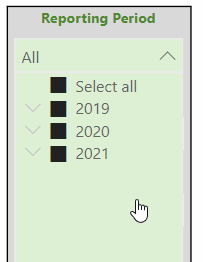This page provides documentation for the Coordinated Entry and Housing Demographics Report. Documentation includes the report’s purpose, data source, reporting frequency, and key terms.
Purpose
This dashboard analyzes demographics of HSH clients served by Coordinated Entry since July 1, 2019. It allows users to compare the distributions of households represented in various stages of the Coordinated Entry housing process by demographic categories, including race, ethnicity, gender identity, sexual orientation, and age.
Data Source
All data in this dashboard is sourced from HSH’s Online Navigation and Entry (ONE) System, a HUD-compliant Homeless Management Information System (HMIS).
Reporting Frequency
The dashboard refreshes Monday – Friday at 10 AM with data through the last complete quarter.
Data Notes
- Data can be viewed on a quarterly basis through the most recent complete calendar quarter. Data extends back to July 1, 2019. Prior data is not included in the dashboard, as Coordinated Entry did not roll out to all subpopulations until early 2019.
- Data reflects the demographics of heads of household only.
- Demographic percentages in the bar charts are calculated using complete data only to allow for clearer comparison across CE categories. Incomplete data refers to cases where demographic variables were not collected, or where the client indicated that they did not know or refused to answer. The percentages of incomplete data are cited below the bar charts.
- Population cannot be determined for a small percentage of households. This data is removed from the report, and the percentage of missing data is indicated in the info button on the dashboard.
- Some households have multiple engagements under the same CE Status (for example, a household may be enrolled in CE multiple times over time). If a head of household appears multiple times under the same CE Status in the same reporting period and they have aged from one age tier to another between their engagements, then they will be reported according to their age as of their more recent engagement.
- HSH is continuing to onboard partners and nonprofit providers to track all housing referrals and placements in the ONE System. Until we reach full participation, the dashboard data may not fully reflect all housing referrals and placements made in San Francisco’s homelessness response system.
- Starting in fall 2023, clients had the option to identify as Middle Eastern or North African or to identify as exclusively Latine without being asked to identify an additional race. As existing clients update how they identify with these new options included, responses may shift.
Questions?
- For general inquiries, contact hshexternalaffairs@sfgov.org
- For media inquiries, contact hshmedia@sfgov.org
- For technical issues related to this dashboard, contact hshdata@sfgov.org
Key Terms and Acronyms
For an explanation of how clients’ demographic data is collected and reported in accordance with HUD standards, see the HSH’s Demographic Information Reporting Standards.
Key terms for this dashboard include:
CE Status: Identifies the Coordinated Entry (CE) status of the clients at the time of the reporting period. CE statuses included in the dashboard are defined as follows:
| CE Status | Definition |
|---|---|
Enrolled in CE | Households that were actively enrolled in a Coordinated Entry program in the ONE system during the reporting period selected. |
Housing Referral Status | Households that completed a primary assessment and were determined to be Housing Referral Status, as identified by their presence on a Community Queue in the ONE System within the reporting period selected. |
Referred to Housing | Households referred to any permanent housing or rapid re-housing program in the ONE system during the reporting period selected, based on the initial date of the referral. Includes households referred through Coordinated Entry via the Permanent Housing – Rapid Rehousing Community Queue or CAAP Community Queue, but excludes referrals through the Pandemic Prioritization Queue or Emergency Housing Voucher Queue. |
| Housed | Households that moved into Permanent Housing and Rapid Rehousing programs during the reporting period based on a ONE System housing program enrollment with a confirmed move-in date. Excludes transfers based on clients with housing as a prior living situation. May include non-Housing Referral Status clients from the COVID-19 alternative shelter program that received housing as a result of temporary Pandemic Prioritization processes. |
Population: Identifies the client household type in categories aligned with HSH’s definitions for homeless populations. For CE statuses “Enrolled in CE” and “Housed,” population types are identified based on the client’s household type and age at program enrollment. For the CE statuses “Housing Referral Status” and “Referred to Housing,” population types are identified based on the client’s most recent CE assessment type and age at assessment.
| Population | Definition |
|---|---|
| Adult | Head of household aged 25 or over living in a household without minor children. |
| Young adult | Head of household aged 18 to 24 without minor children. |
| Family | Head of household aged 18 or over with one or more minor children. Pregnant people and parenting young adults are eligible for services under Family Coordinated Entry. |
Age: Clients’ ages are captured at different points for each CE Status:
- Enrolled in CE: Age at program enrollment
- Housing Referral Status: Age at CE assessment
- Referred to Housing: Age at referral
- Housed: Age at housing move-in
| Age | Definition |
|---|---|
| Young adults | Heads of household aged 18 to 24. |
| Adults (25 – 54) | Heads of household aged 25 to 54. |
| Older adults | Heads of household aged 55 and above. |
